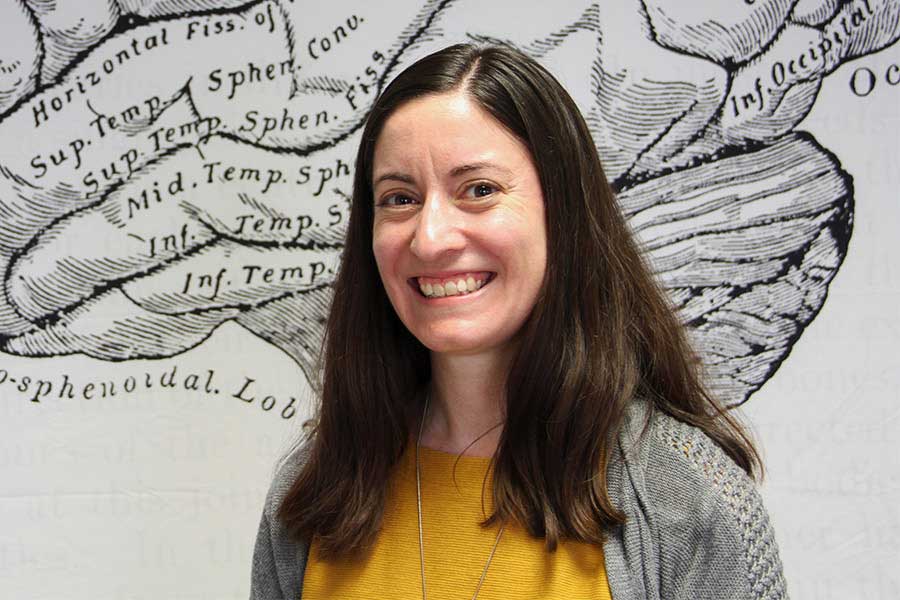
While scientists have made significant advancements in understanding the basic biology of Parkinson’s disease, most work has focused on determining how a group of people with Parkinson’s differs from a group of people without the disease. That is about to change.
Florida State University Associate Professor of Psychology Caterina Gratton is part of a multi-institution team working to produce reliable and detailed measures of an individual person’s brain networks — representations of how brain regions communicate together — to identify how specific differences in brain networks affect symptoms and progression of Parkinson’s, a disease that affects nearly 1 million people in the U.S.
The team is funded by a new five-year, $3 million National Institutes of Health Research Project Grant.
“We’re thrilled to be supported in this way by the NIH,” Gratton said. “We understand that Parkinson’s disease and the brain both look quite different across individuals, and this grant will allow us to collect exciting new data on individual brain networks in Parkinson’s disease and hopefully illuminate how these networks may be connected to differences in symptoms and pathology seen in the disorder.”
Brain networks can be thought of like any other complex, multi-node system, such as transportation networks. If bad weather affects flights in one part of the country, this can impact flights throughout the U.S., and the effects can spread depending on the pattern of flights between airports.
Similar cascading disruption happens when neurodegeneration affects certain brain regions that connect to many others — neurodegenerative diseases impact not just discrete brain regions but the whole system of communication between brain regions.
Using MRI technology, Gratton, co-collaborator Meghan Campbell, an associate professor in the Departments of Neurology and Radiology at the Washington University in St. Louis School of Medicine, and their team will apply a novel precision-mapping approach to determine individual differences and similarities in the neurodegeneration of brain networks in people affected by Parkinson’s disease.
“The similarity in brain activity allows us to understand which regions of the brain are communicating with each other and forming brain networks,” Gratton said. “Impairment in an individual’s cognition and behavior stems, at least partly, from impairments in the ability of brain regions to communicate with each other effectively. Since networks vary across people, it’s important to look at how Parkinson’s affects brain networks in individual people.”
Observing and mapping the similarities and differences could then be useful in identifying new areas to target for treatment and in developing methods to monitor the effects of such treatment.
“We will also conduct follow-up assessments measuring potential changes in cognition, allowing us to determine if individual differences in brain networks predict subsequent disease progression and cognitive decline,” Campbell said.
The researchers are similarly interested in how disruptions to cognitive and psychiatric function and sleep arise from Parkinson’s. When neurons in certain brain areas are active, they use energy and blood flows to those areas to supply oxygen and glucose.
As study participants sit quietly and allow their thoughts to wander, the team will use MRI scans to track changes in blood flow to different brain areas over time and determine which regions of the brain are communicating and sharing information. These connections, which remain even while the individual is asleep, can then be defined, characterized, and studied to improve understanding of underlying neurobiological processes accompanying Parkinson’s disease and contributing to symptoms.
“Measuring networks for individuals, however, has often produced data that is inherently noisy, or unclear. My colleagues and I have developed reliable new methods to address these issues by collecting more extended amounts of data from individuals and by combining this extended data collection with advanced methods to denoise the data and more precisely define brain networks,” Gratton said. “Our hope is that, in the future, this information points us in the direction of markers to track to better understand prognosis in the disorder as well as potential treatment targets.”
Gratton, who joined the FSU Department of Psychology and the Program in Neuroscience in 2022, received her doctoral degree from the University of California — Berkeley in 2013 before completing a post-doctoral fellowship at Washington University in St. Louis where she and Campbell first began collaborating on Parkinson’s research.




